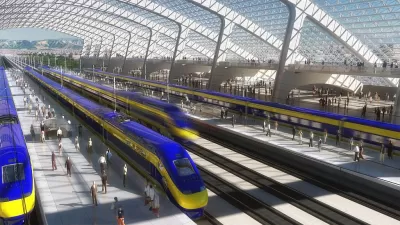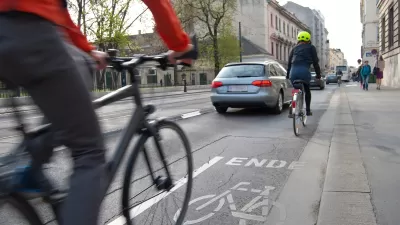The cost of building roads and transit projects has skyrocketed in the last 50 years, but the reasons behind the rise are complex.

Writing in Vox, Jerusalem Demsas questions the high cost of infrastructure in the United States. "Not only are these projects inordinately expensive, states and localities are not even attempting to build particularly ambitious projects. The US is the sixth-most expensive country in the world to build rapid-rail transit infrastructure like the New York City Subway, the Washington Metro, or the Chicago 'L.'"
Despite its complexity, this is an important question: "NYU researchers noted the massive economic stakes, pointing to studies that show that building dense urban transit networks could increase aggregate economic growth by roughly 10 percent." America's transit systems and highways are inordinately expensive to build, with the cost of one lane mile increasing five-fold between 1990 and 2008. According to research conducted by economist Leah Brooks, "states spent nearly three times as much to build a mile of highway in the 1980s as they did in the early ‘60s," indicating a trend toward higher and higher construction costs. When it comes to transit, the picture is equally bleak: a report from the Eno Center for Transportation found that "[o]n a per mile basis, America’s transit rail projects are some of the most expensive in the world."
The reasons why prices are rising are unclear but "[economist Matthew] Turner explains that common theories like unions or the way we’re building roads or where we’re building them (for example, in more urban areas) are not supported by statistical evidence." According to Brooks, "judicial, statutory, and administrative changes — in particular the passage of the National Environmental Policy Act (NEPA) in 1970 — have led to increased power for citizens," which, while intended to prevent harmful actions, has often resulted in the ability of "wealthy individuals to exert their preferences over everyone else."
Yet "America spends a relatively small amount of its GDP (1.5 percent) on public infrastructure, while the UK spends 2 percent, France 2.4 percent, and Australia 3.5 percent." The problem, writes Demsas, is that "the US is getting very little for what it builds." Collecting more data, reducing the bureaucratic red tape that slows projects down, and seeking examples from other countries can help "put the US on the path to a future with accessible, plentiful, and cost-efficient transit."
FULL STORY: Why does it cost so much to build things in America?

Planetizen Federal Action Tracker
A weekly monitor of how Trump’s orders and actions are impacting planners and planning in America.

San Francisco's School District Spent $105M To Build Affordable Housing for Teachers — And That's Just the Beginning
SFUSD joins a growing list of school districts using their land holdings to address housing affordability challenges faced by their own employees.

The Tiny, Adorable $7,000 Car Turning Japan Onto EVs
The single seat Mibot charges from a regular plug as quickly as an iPad, and is about half the price of an average EV.

Seattle's Plan for Adopting Driverless Cars
Equity, safety, accessibility and affordability are front of mind as the city prepares for robotaxis and other autonomous vehicles.

As Trump Phases Out FEMA, Is It Time to Flee the Floodplains?
With less federal funding available for disaster relief efforts, the need to relocate at-risk communities is more urgent than ever.

With Protected Lanes, 460% More People Commute by Bike
For those needing more ammo, more data proving what we already knew is here.
Urban Design for Planners 1: Software Tools
This six-course series explores essential urban design concepts using open source software and equips planners with the tools they need to participate fully in the urban design process.
Planning for Universal Design
Learn the tools for implementing Universal Design in planning regulations.
Smith Gee Studio
City of Charlotte
City of Camden Redevelopment Agency
City of Astoria
Transportation Research & Education Center (TREC) at Portland State University
US High Speed Rail Association
City of Camden Redevelopment Agency
Municipality of Princeton (NJ)





























